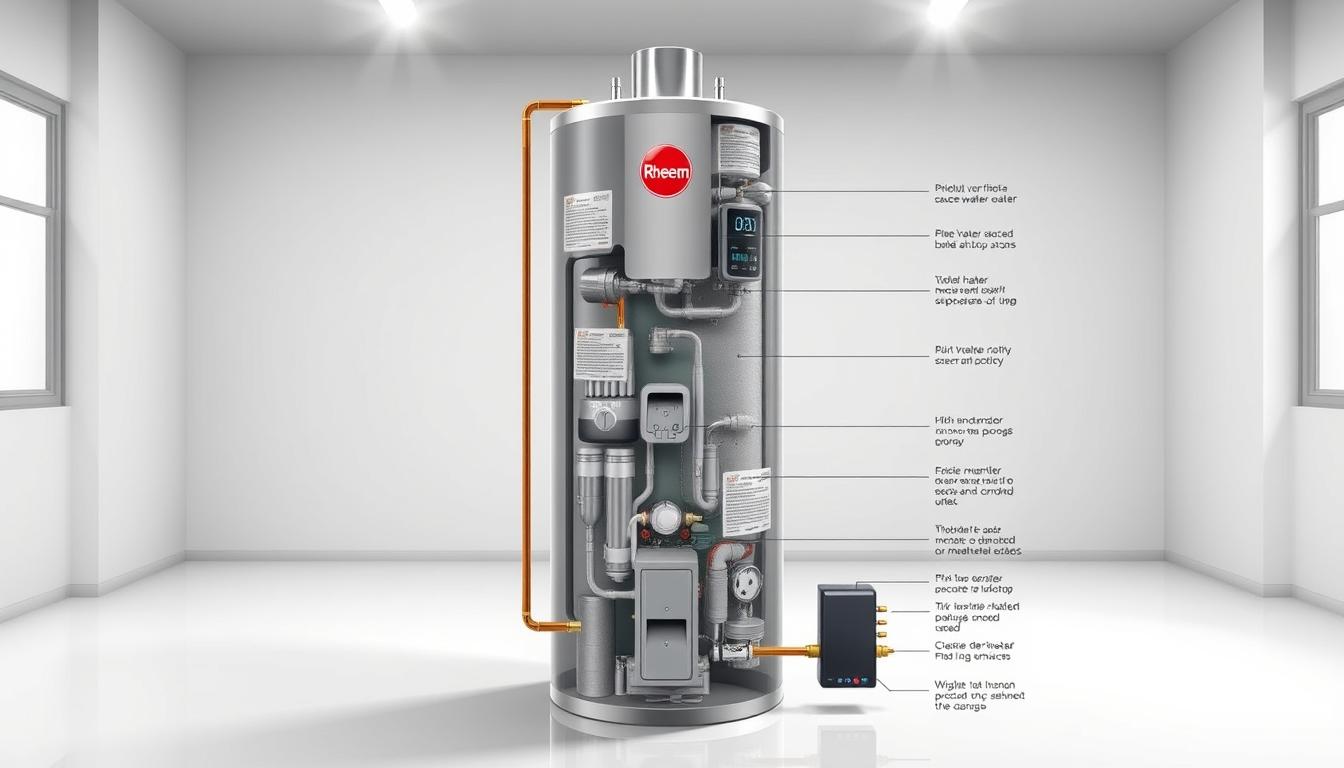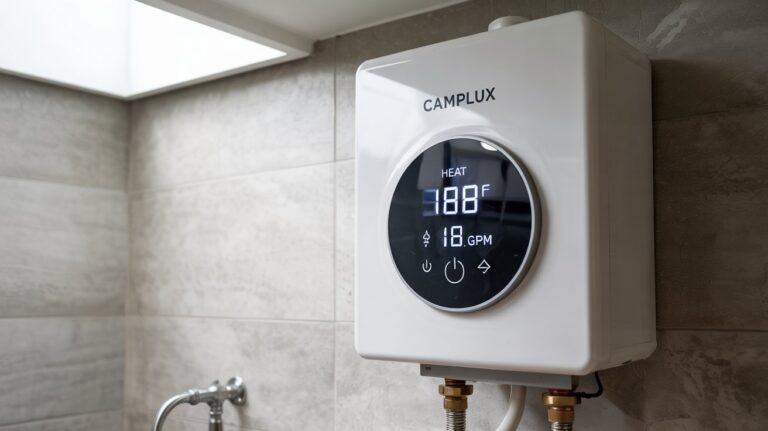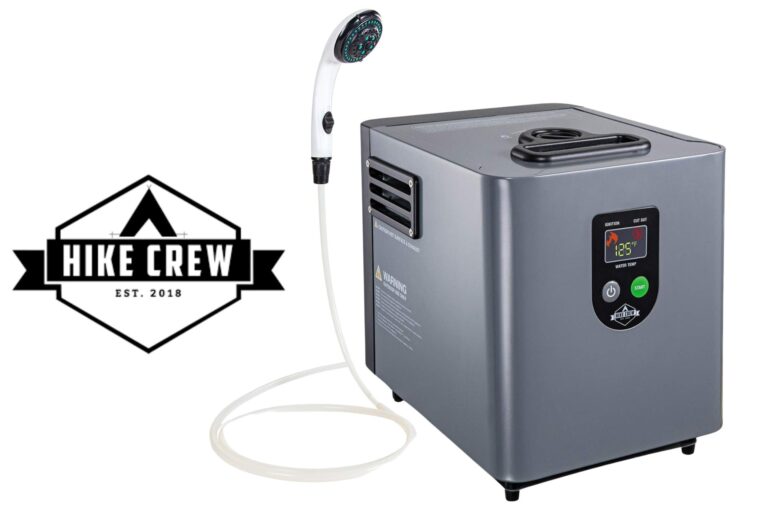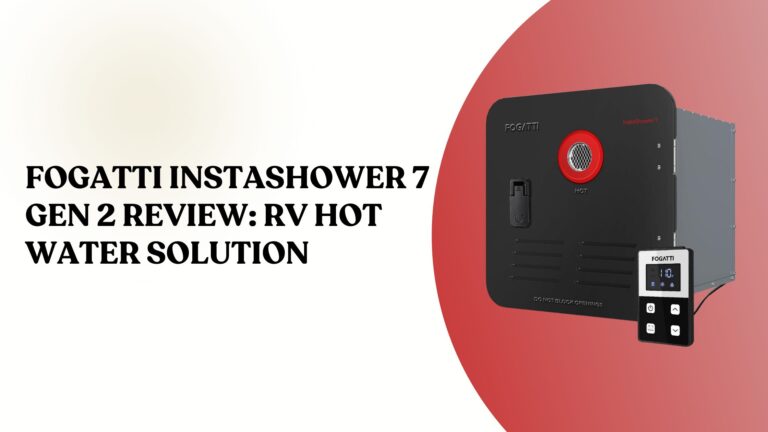Rheem Water Heater Troubleshooting Guide
Are you experiencing a cold shower on a chilly morning due to your Rheem water heater malfunctioning?
This is a common issue many homeowners face, but the good news is that many problems with Rheem water heaters can be identified and potentially fixed without calling a professional.
Understanding the basics of your Rheem water heater and taking some simple troubleshooting steps can save you time and money. In this comprehensive guide, we’ll walk you through the process of diagnosing and resolving common issues, ensuring you have a reliable supply of hot water.
Key Takeaways
- Common issues with Rheem water heaters and their potential causes
- Step-by-step guide to troubleshooting your Rheem water heater
- Safety precautions to take when working with your water heater
- Tips for maintaining your Rheem water heater to prevent future issues
- When to call a professional for assistance
Understanding Your Rheem Water Heater
Understanding the inner workings and components of your Rheem water heater is essential for efficient troubleshooting. Rheem water heaters are available in various models, each with its unique features and functionalities.
Types of Rheem Water Heaters
Rheem offers a range of water heaters, including traditional tank models and tankless systems. Traditional tank water heaters store hot water, ready for use, while tankless models heat water on demand. Tankless water heaters are gaining popularity due to their energy efficiency and continuous hot water supply.
| Type | Description | Benefits |
|---|---|---|
| Tank Water Heater | Stores hot water in a tank | Lower upfront cost, widely available |
| Tankless Water Heater | Heats water on demand | Energy efficient, continuous hot water |
Locating Model and Serial Numbers
The model and serial numbers of your Rheem water heater are crucial for ordering replacement parts or consulting the user manual. These numbers are typically found on the rating plate, usually located on the side or front of the water heater. Keep these numbers handy for future reference.
Basic Components and Their Functions
Key components of a Rheem water heater include the thermostat, heating elements (for electric models), burner (for gas models), and pressure relief valve. The thermostat regulates water temperature, while the heating elements or burner heat the water. The pressure relief valve is a safety device that releases water if the tank pressure becomes too high.
By understanding these components and their functions, you’ll be better equipped to diagnose and potentially fix issues with your Rheem water heater, ensuring it operates efficiently and safely.
Safety Precautions Before Troubleshooting
Before diving into troubleshooting your Rheem water heater, it’s crucial to take necessary safety precautions. Troubleshooting can involve working with electrical and gas systems, which can be hazardous if not handled properly.
Electrical Safety for Electric Models
For electric Rheem water heaters, avoid electrical shock by switching off the power supply at the circuit breaker or fuse box before starting any work. Use a non-contact voltage tester to verify that the power is off. It’s also a good practice to lock the breaker or fuse box to prevent accidental reactivation.
Gas Safety for Gas Models
When dealing with gas Rheem water heaters, ensure proper ventilation to avoid gas buildup. Check for gas leaks using a soapy water solution on the connections and pipes; bubbles will indicate a leak. If you suspect a gas leak, turn off the gas supply immediately and ventilate the area.
Tools You’ll Need for Troubleshooting
Having the right tools is essential for safe and effective troubleshooting. You’ll need a multimeter to check electrical circuits, pliers for gripping small objects, and a screwdriver for accessing internal components. As Rheem recommends, “Always follow the manufacturer’s instructions for your specific model.”
“Safety is not just a precaution, it’s a necessity when working with complex appliances like Rheem water heaters.”
By taking these safety precautions and having the necessary tools, you’ll be well-prepared to troubleshoot your Rheem water heater safely.
No Hot Water: Common Causes and Solutions
If you’re experiencing a lack of hot water with your Rheem water heater, there are several potential causes to investigate. Understanding these common issues can help you troubleshoot and possibly fix the problem.
Power Supply Issues
For electric Rheem water heaters, the first step is to check the power supply. Ensure that the circuit breaker hasn’t tripped or a fuse hasn’t blown. Check your electrical panel to verify that the breaker is in the “on” position. If it has tripped, reset it and see if the water heater begins to function.
Key checks:
- Verify the circuit breaker status
- Check for blown fuses
Thermostat Problems
Thermostat issues can also prevent your Rheem water heater from producing hot water. Check the temperature setting to ensure it’s not set too low. If the thermostat is faulty, it may need to be replaced. For Rheem water heaters, the thermostat is usually located behind an access panel.
Tip: Consult your user manual for specific instructions on accessing and adjusting the thermostat.
Heating Element Failures
In electric Rheem water heaters, heating element failure is a common issue. You can test the heating elements using a multimeter to check for continuity. If an element is faulty, it will need to be replaced. Ensure you purchase a compatible replacement part.
Gas Supply Problems
For gas Rheem water heaters, issues with the gas supply can cause a lack of hot water. Check that the gas valve is fully open and that there are no leaks in the gas line. Also, ensure that the pilot light is lit. If it’s not, follow the manufacturer’s instructions to relight it.
Important: If you suspect a gas leak, turn off the gas supply and contact a professional immediately.
By systematically checking these potential causes, you can identify and possibly fix the issue preventing your Rheem water heater from producing hot water. Regular maintenance can also help prevent future problems.
How to Troubleshoot Rheem Water Heater Temperature Issues
Rheem water heater temperature issues can be a significant inconvenience, but they can often be resolved with some basic troubleshooting. Temperature problems can manifest in different ways, such as water being too hot, inconsistent temperatures, or the water not being hot enough.
Water Too Hot
If your Rheem water heater is producing water that’s too hot, it could be due to a faulty thermostat or an incorrect temperature setting. Check the thermostat setting and adjust it if necessary. Ensure it’s not set too high.
Inconsistent Water Temperature
Inconsistent water temperature can be caused by a malfunctioning mixing valve or sediment buildup in the tank. Inspect the mixing valve and clean or replace it if necessary.
Adjusting the Thermostat Correctly
Adjusting the thermostat correctly is crucial for achieving the desired temperature. Refer to your Rheem water heater’s manual for instructions on how to adjust the thermostat.
Checking for Sediment Buildup
Sediment buildup can affect the performance and efficiency of your water heater. Regular maintenance involves checking for sediment and flushing the tank if necessary.
| Issue | Possible Cause | Solution |
|---|---|---|
| Water too hot | Faulty thermostat | Adjust or replace thermostat |
| Inconsistent temperature | Malfunctioning mixing valve | Inspect and replace mixing valve |
| Temperature issues | Sediment buildup | Flush the tank |
Dealing with Leaks and Water Damage
When dealing with Rheem water heater problems, identifying and fixing leaks is crucial. Leaks can lead to water damage, increased utility bills, and potentially hazardous situations. It’s essential to address these issues promptly to ensure the longevity and efficiency of your water heater.
Identifying the Source of Leaks
The first step in troubleshooting Rheem water heater leaks is to identify their source. Common areas where leaks occur include:
- Connections between the water heater and pipes
- The pressure relief valve
- The tank itself
- Drain valves
Inspecting these areas carefully can help you determine where the leak is coming from.
Pressure Relief Valve Issues
The pressure relief valve is a critical safety component of your Rheem water heater. Issues with this valve can lead to leaks. Common problems include:
- Faulty valve operation
- Excessive pressure causing the valve to discharge water
If you suspect the pressure relief valve is the source of the leak, inspect it for any signs of damage or malfunction.
Tank Corrosion and Replacement Indicators
Tank corrosion is a significant issue that can lead to leaks. Signs that your Rheem water heater tank may be corroding include:
- Rust-colored water
- Leaks from the tank
- Age of the water heater (typically beyond 10-15 years)
If you notice any of these signs, it may be time to consider replacing your water heater.
Fixing Connection Leaks
Leaks from connections can often be fixed by tightening loose fittings or replacing faulty parts. Ensure that all connections are secure and not damaged. If you’re unsure about how to proceed, consider consulting a professional plumber to avoid further complications.
By addressing leaks promptly and properly, you can prevent further damage and ensure your Rheem water heater operates efficiently.
Strange Noises: Diagnosing and Fixing
Strange noises coming from your Rheem water heater are not just annoying; they can signal underlying problems that need to be addressed to ensure the longevity and efficiency of your water heater.
These unusual sounds can be categorized into several types, each indicating different potential issues. Understanding the cause is the first step towards resolving the problem.
Rumbling and Popping Sounds
Rumbling and popping noises are often associated with sediment buildup in the tank. Over time, minerals from the water can settle at the bottom of the tank, causing these sounds as the heating elements heat the sediment.
- To address this issue, consider flushing your water heater to remove the sediment.
- Regular maintenance, such as annual flushing, can help prevent sediment buildup.
Whistling or Screaming Noises
Whistling or screaming noises might indicate a problem with the pressure relief valve or high water pressure. These sounds can be a sign that the valve is malfunctioning or that there’s an issue with the water pressure in your home.
- Check the pressure relief valve to ensure it’s functioning correctly.
- If the issue persists, consider consulting a professional to assess your home’s water pressure.
Ticking and Clicking Sounds
Ticking and clicking sounds could be related to the heating elements or electrical issues within the water heater. These noises might occur as the elements expand and contract during heating cycles.
To diagnose the issue:
- Inspect the heating elements for any signs of wear or damage.
- Check the electrical connections to ensure they are secure and not causing the noises.
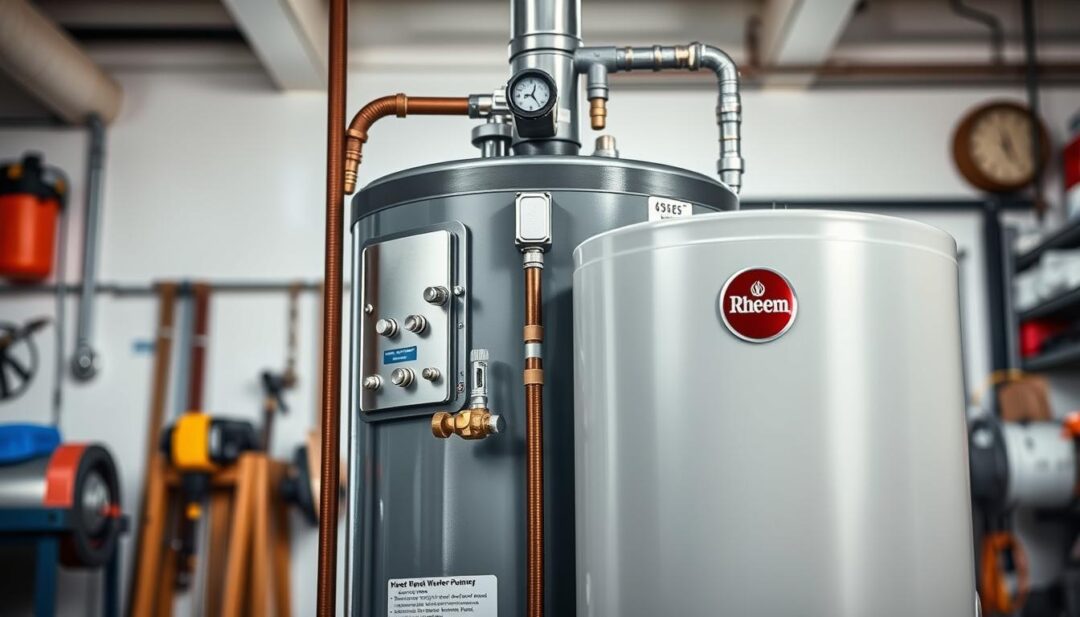
By identifying and addressing the causes of these strange noises, you can ensure your Rheem water heater operates quietly and efficiently, providing you with reliable hot water.
Troubleshooting Rheem Tankless Water Heaters
Diagnosing problems with your Rheem tankless water heater can be straightforward with the right knowledge. Rheem tankless water heaters are designed to provide continuous hot water while being energy efficient, but like any complex appliance, they can sometimes malfunction.
“Understanding the error codes displayed on your Rheem tankless water heater is crucial for identifying the root cause of any issues,” says a Rheem service technician. These codes are like diagnostic clues that can guide you toward a solution.
Understanding Error Codes
Rheem tankless water heaters are equipped with digital displays that show error codes when a problem occurs. These codes can indicate issues ranging from ignition failures to problems with the heat exchanger. Refer to your user manual to decode the specific error message displayed on your unit.
For instance, an error code indicating an ignition failure might suggest that the igniter is faulty or there’s an issue with the gas supply. On the other hand, a code pointing to a heat exchanger problem could indicate overheating or a blockage.
Flow Rate Problems
Flow rate issues can significantly impact the performance of your Rheem tankless water heater. If the flow rate is too low, the heater may not activate, or it might not heat the water to the desired temperature. Check for mineral buildup in the filter or faulty flow sensors that could be causing the issue.
To resolve flow rate problems, inspect and clean the inlet filter regularly. Additionally, ensure that the flow sensor is clean and functioning correctly. If the issue persists, it may be necessary to consult a professional.
Ignition Failures
Ignition failures are a common issue with Rheem tankless water heaters. If your unit fails to ignite, check the igniter for any signs of wear or damage. Ensure that the gas supply is turned on and that there are no obstructions in the gas line.
As emphasized by Rheem, “Regular maintenance, such as checking the igniter and ensuring proper gas supply, can prevent many common issues with tankless water heaters.”
Ventilation Issues
Proper ventilation is critical for the safe operation of your Rheem tankless water heater. Ventilation issues can lead to safety hazards, including carbon monoxide buildup. Check that the venting system is correctly installed, not blocked, and free from damage.
Regularly inspect the venting system for any signs of wear or damage. Ensure that the vent pipes are properly connected and that there are no obstructions, such as debris or animal nests, that could impede airflow.
Addressing Rheem Gas Water Heater Problems
If you’re experiencing issues with your Rheem gas water heater, this section will guide you through diagnosing and potentially fixing the problems.
Rheem gas water heaters are complex systems that can be affected by various factors. Understanding the common issues can help you troubleshoot effectively.
Pilot Light Issues
The pilot light is a critical component of your Rheem gas water heater. Issues with the pilot light can prevent your water heater from functioning correctly. To troubleshoot:
- Check if the pilot light is lit. If not, relight it according to the manufacturer’s instructions.
- Ensure the pilot assembly is clean and free from debris.
- If the pilot light won’t stay lit, it may indicate a faulty thermocouple.
Burner Malfunctions
Burner malfunctions can lead to inadequate heating or no hot water. Common issues include:
- Clogged burner orifices: Clean the orifices to ensure proper gas flow.
- Improper burner operation: Check for any blockages or issues with the burner assembly.
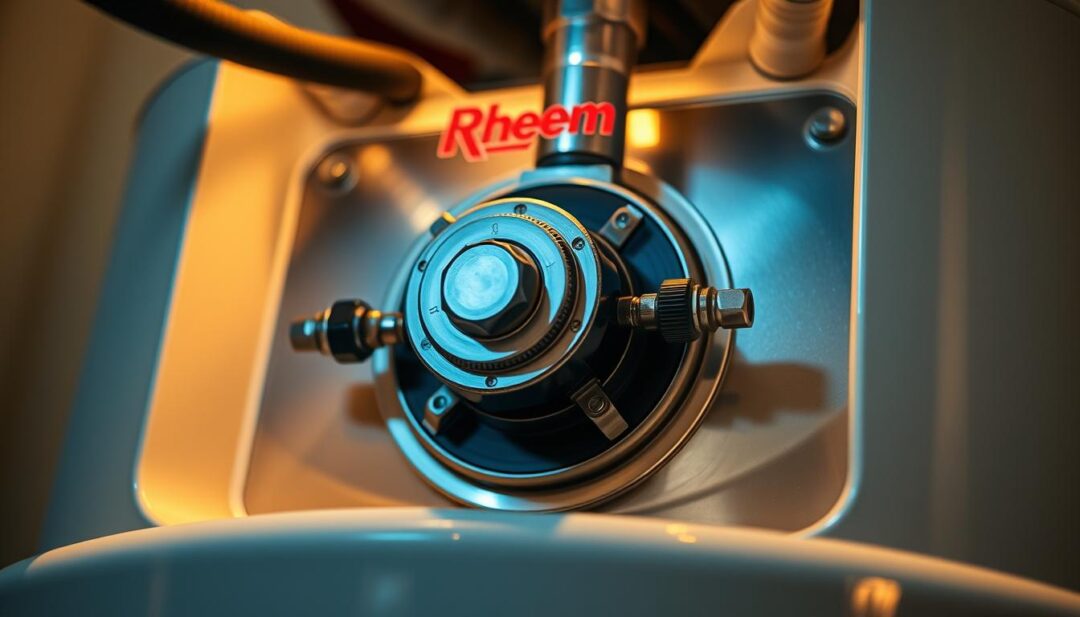
Thermocouple Replacement
The thermocouple is a safety device that shuts off the gas supply if the pilot light goes out. A faulty thermocouple can cause issues with your water heater’s operation. To replace:
- Turn off the gas supply.
- Disconnect the thermocouple from the gas control valve.
- Remove the thermocouple from the pilot assembly.
- Install a new thermocouple, ensuring it’s securely connected.
Gas Control Valve Troubleshooting
The gas control valve regulates gas flow to the burner. Issues with this valve can affect your water heater’s performance. To troubleshoot:
| Issue | Possible Cause | Solution |
|---|---|---|
| Water not hot enough | Incorrect temperature setting | Adjust the temperature setting |
| No hot water | Faulty gas control valve | Replace the gas control valve |
By following these troubleshooting steps, you can identify and potentially fix issues with your Rheem gas water heater, ensuring a reliable hot water supply. For complex issues or if you’re unsure about any step, consider consulting a professional for Rheem water heater repair tips.
Electric Rheem Water Heater Troubleshooting
Electric Rheem water heaters are reliable, but when problems arise, a systematic troubleshooting approach is essential. Troubleshooting your electric Rheem water heater involves understanding its components and how they function together.
Testing and Replacing Heating Elements
One common issue with electric Rheem water heaters is the failure of heating elements. To test them, you’ll need a multimeter. Set the multimeter to the ohms function and measure the resistance across the heating element terminals. A reading of around 10-20 ohms is normal; significantly higher or lower readings indicate a faulty element. Replacing a heating element involves turning off the power supply, draining the tank, and then removing the faulty element.
Resetting the High-Temperature Limit Switch
If your Rheem water heater has overheated, the high-temperature limit switch may have tripped. To reset it, first, identify the switch, usually located near the thermostat or on the heating element. After ensuring the water heater has cooled down, press the reset button. If it trips again soon after, there might be a more serious issue requiring professional attention.
Wiring and Circuit Issues
Wiring and circuit problems can also affect your electric Rheem water heater’s performance. Check for loose connections or blown fuses. Ensure that the circuit breaker hasn’t tripped. Consulting the user manual or a professional can help diagnose these issues accurately.
Anode Rod Inspection and Replacement
The anode rod protects your water heater from corrosion by sacrificing itself. Inspecting and replacing it when necessary is crucial. To do this, turn off the water heater, locate the anode rod on top of the tank, and unscrew it. If it’s significantly corroded, replacement is necessary. This simple maintenance can extend the life of your Rheem water heater.
By following these troubleshooting steps, you can identify and potentially fix common issues with your electric Rheem water heater, ensuring it continues to provide hot water efficiently.
Conclusion
To effectively troubleshoot your Rheem water heater, it’s essential to understand the steps outlined in this guide. Regular Rheem water heater maintenance is crucial for preventing common issues and ensuring a reliable supply of hot water.
By following the troubleshooting steps and performing regular maintenance, you can identify and potentially fix issues before they become major problems. This includes checking the anode rod, inspecting for leaks, and ensuring proper ventilation.
Understanding how to troubleshoot your Rheem water heater empowers you to take control of your hot water supply. If you’re unsure about any aspect of the process or identify a complex issue, it’s recommended to consult a professional plumber to ensure your Rheem water heater operates safely and efficiently.
Proper maintenance and timely troubleshooting can extend the lifespan of your Rheem water heater, providing you with a consistent and reliable hot water supply for years to come, and learning how to troubleshoot Rheem water heater issues is an essential skill for homeowners.

